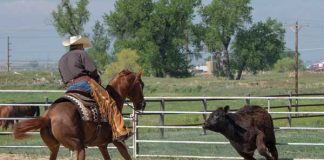A versatile ranch horse can do anything his rider asks—including pulling gear or livestock with a rope connected to the saddle horn. Versatility ranch horse competitions mirror real-life ranch tasks that include a rope-drag obstacle in the ranch trail class. Adult ranch trail riders must pull an object by rope and dally (looping the rope around the saddle horn), then circle or complete a figure-eight pattern.
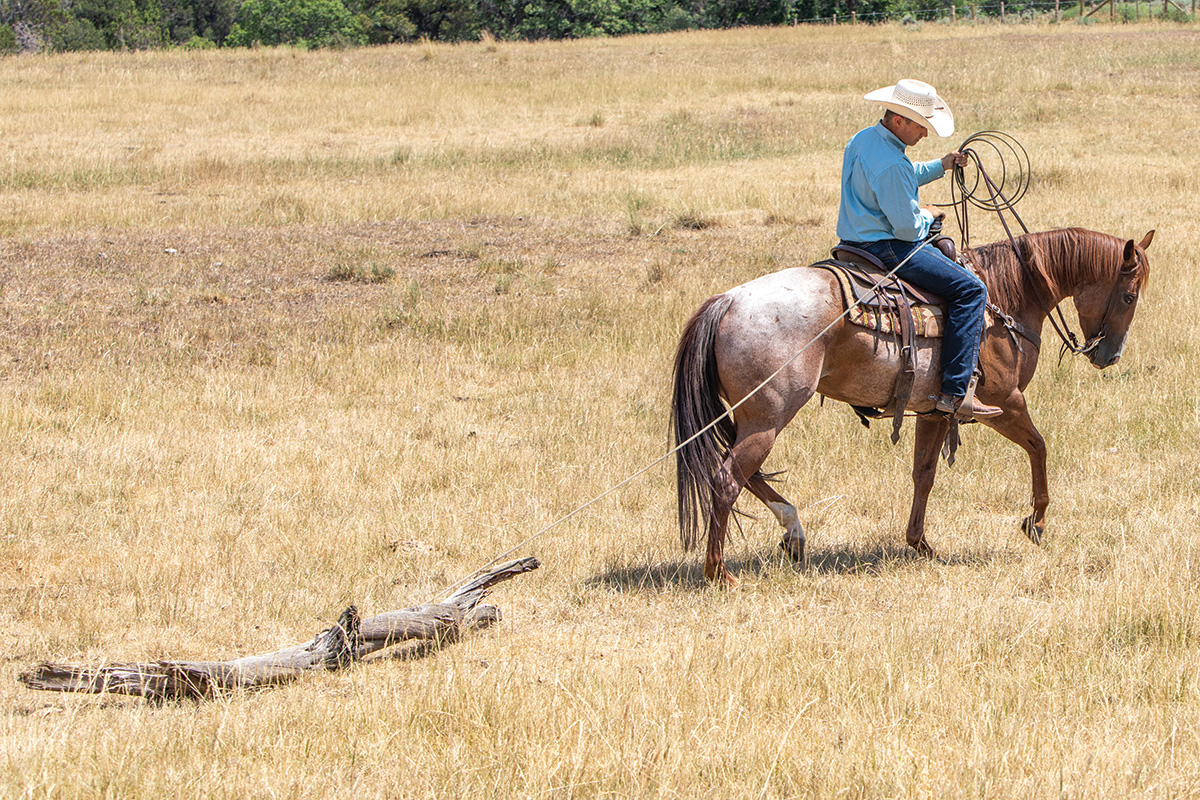
“It’s important to know how to work a rope correctly,” says Ralston. “It’s easy to get in a wreck if you don’t know how to keep the rope in the correct place.”
Before the Drag
Before you mount up, make sure you have a rope made for ranch work. Twisted rope maintains its shape and won’t break easily.
You’ll also need to ensure that your horse accepts the feel of rope touching him. Here, we’ll assume that your horse will stand still and relax when a rope touches his body. (If you need desensitization help, visit www.horseillustrated.com/how-to-desensitize-your-horse.)
Loop or tie your rope’s end to a log before you start to practice. Choose a log that is a similar weight to a calf—about 125 to 175 pounds. A log with some weight will mimic pulling a calf and will provide resistance as you and your horse pull.
Safety notes: Keep in mind that at any training step, you can turn and face the dragged log if your horse gets worried. Turning toward the side where the rope touches your leg will relieve pressure and allow your horse to stop, look, and relax without getting wrapped up.
Never dally until your horse is calm and comfortable while pulling. You can always hold the rope and drop it if necessary until your horse fully accepts the feel of pulling the log.
Follow First
Have a knowledgeable friend drag a log on a horse that has mastered the skill. Follow along on your horse. First, approach from afar and move forward to follow more closely.
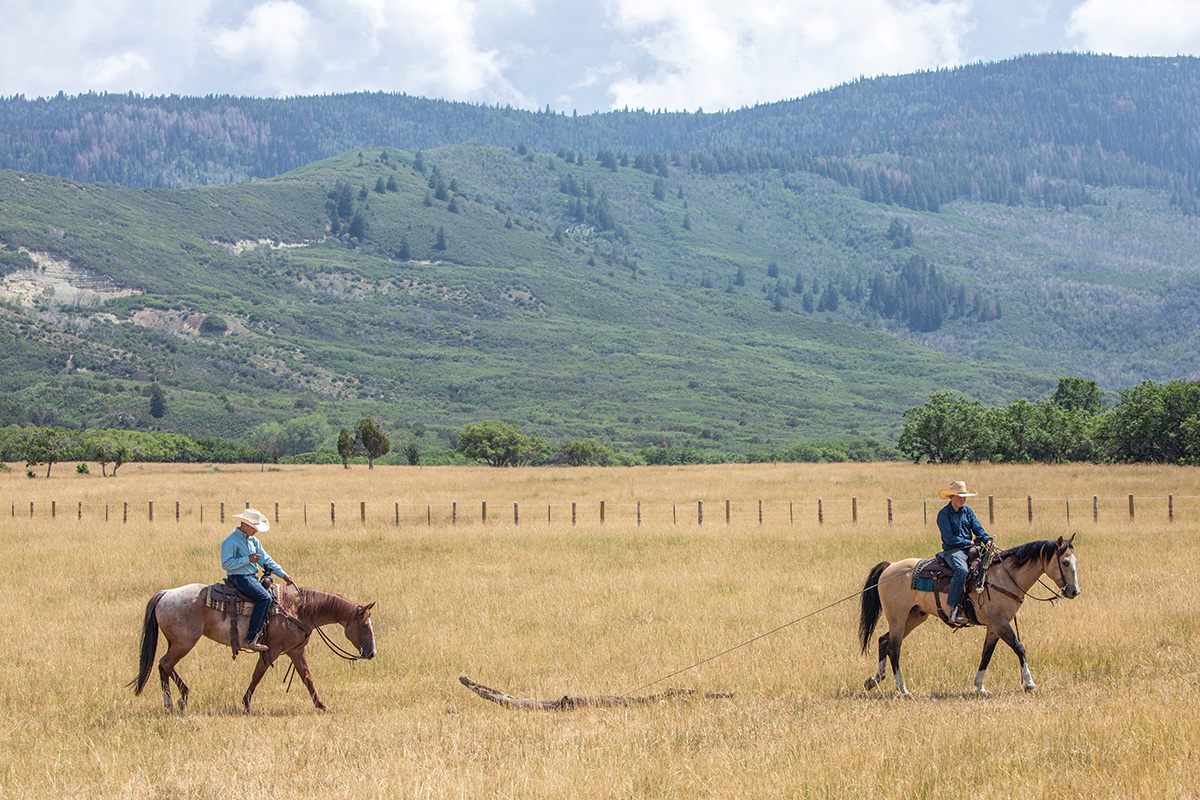
Ralston suggests allowing your horse to see the log move with his eyes in all possible positions.
“Let him see it from the front, then from the back of his right eye, then from the back with his left eye,” he says. “Seeing that the log moves from these different directions will help your horse be less fearful of it when he’s pulling the rope.”
Drag the Rope
Next, get your horse accustomed to dragging the rope with nothing attached.
“Without the threat of something else moving, make sure that your horse is comfortable with the rope touching him all over,” Ralston says. “He can drag it and then turn and face the end—doing the same motion that I’ll later teach with the log attached to the rope.”
Ralston says this is a good time to get used to holding the coils of the rope in your left (reining) hand, while keeping the dragging rope in your right hand. The rope and the object you’ll drag will always stay on the right side of your horse.
With your reining hand also holding the coils, you can adjust the length of rope that you’ll feed out to drag the log. When it’s time to pull the log, you’ll need to keep the rope length long enough so that your horse doesn’t step on the log, but short enough so that excess rope doesn’t get caught under his tail. Keep your log about a horse length away from your horse.
Log Drag
Have a friend hand you the coiled end of the rope that’s attached to your log. From the start, allow your horse to face the log so that he can clearly see what’s moving—and reduce his urge to flee.
“I’m going to let him face the log and I’m not going to dally,” Ralston says. “I’ll sit at a safe distance and pull the log closer. He wants to back up away from the log. We are safer and won’t get caught up.”
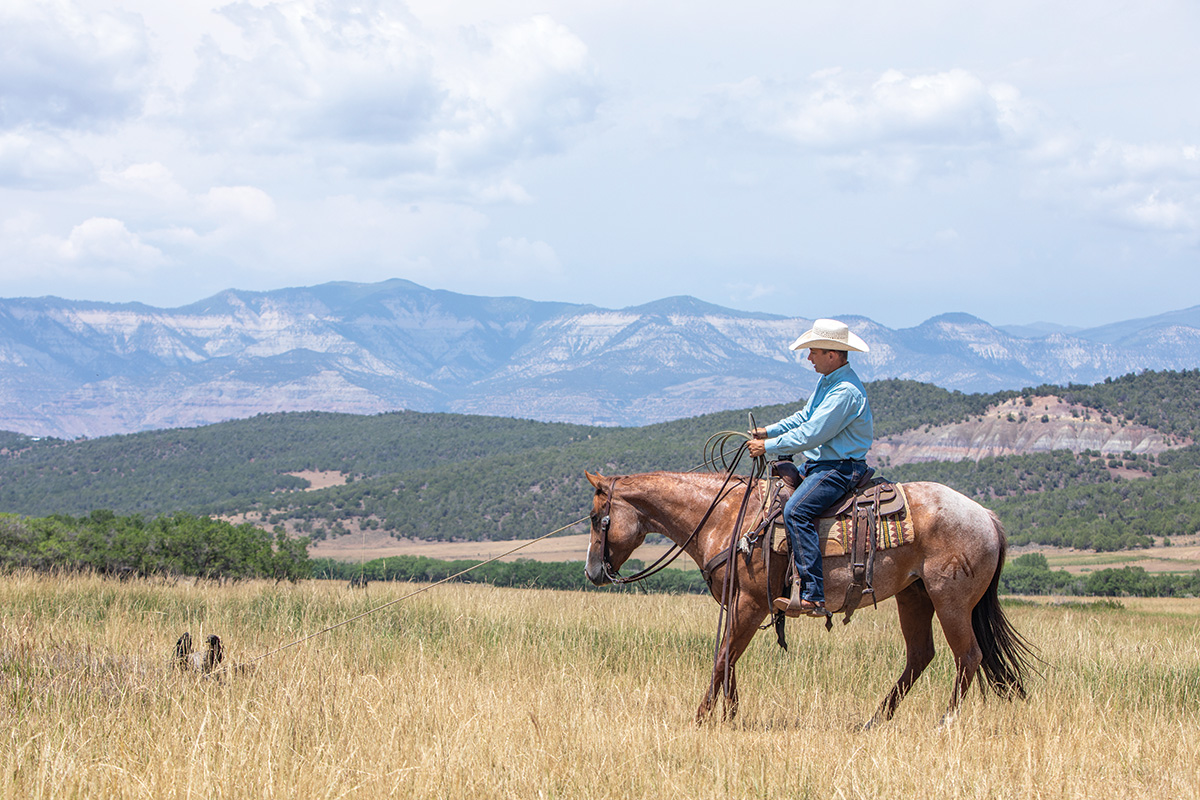
Ralston continues to pull the rope toward his horse until he stands still and accepts the log moving toward him. When he stands calmly, it’s time for the next step.
Half Wrap
It’s time for Ralston’s horse to pull the rope. Without wrapping the rope tightly around the saddle horn, Ralston moves the rope in a “U” shape around the saddle horn, not making a full circle around it. In this half wrap, the horse will move the rope and log, but Ralston can quickly release the rope if needed.
“I’ll ask him to back up and move the log,” he says. “He’s backing up nice and relaxed and confident. He starts to lick and chew, meaning he’s thinking and processing.”
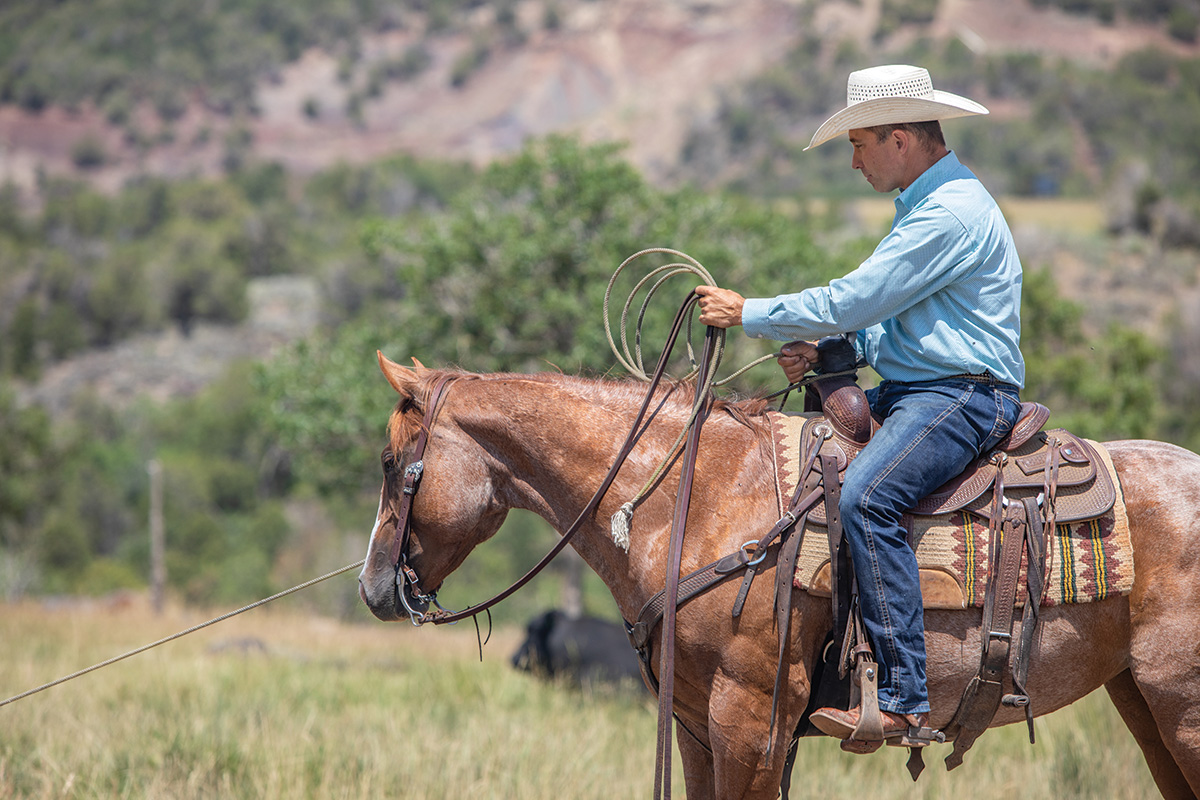
Stay at this stage until your horse calmly backs on command. If at any time he seems nervous, go back to pulling the rope on your own and release the half wrap.
Pull, Then Turn
If your horse is comfortable with the log in front of him, it’s time to transition to pull from the right side. To start, you’ll position your horse so that the log isn’t behind him.
“Now, I’ll turn my horse,” Ralston says. “This is a scarier position for horses to be in because they can’t see the log with both eyes. I don’t want to move straight away from the rope. I want to be at a three-quarter angle to the log so that I can easily turn my horse to face up to the log without getting caught up.
“Standing still at our three-quarter position, I can feel my horse start to move and worry that the log is in a new position,” he says. “I turn him to the right to have him face up again. When he calms down, I’ll return to the three-quarter position and move the log. If he moves his feet, I’ll turn him to face up again. I keep working until he stands still when I pull it at the three-quarter position.”
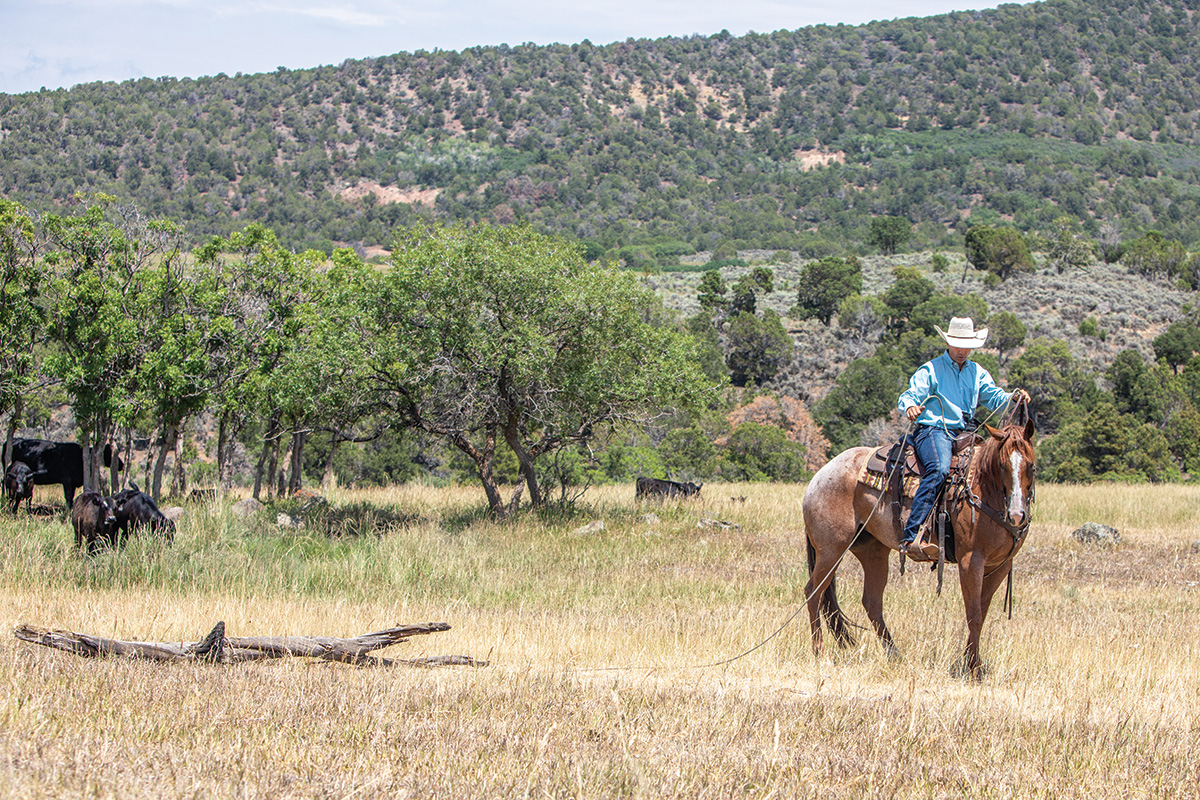
Ralston says he’ll only take a half wrap on the horn once his horse stands still and allows him to pull the log with the new three-quarter position.
“I’ll take a partial dally and take a few steps,” he says. “If he panics, I undo the dally and face the log. The safest thing is to have them face up to it. We don’t want them to tuck their tail and go forward and away. If the rope gets stuck on the saddle horn and they get running, it will snowball into a negative result. The horse’s release is always to face it and stand still.”
Straight On
Stay at the three-quarter pull position until your horse is calm, accepts the log, and will move forward without stress. Only then is it time to ride straight away from the log.
Ralston says it’s best to undo your half wrap or dally and face up to the log any time your horse tenses or moves quickly.
“If the rope touching your horse’s hindquarters causes him to worry, return to the three-quarter position, then face up. The rope will be against my right leg and against the right side of his hindquarters.”
Ralston says he uses his right leg pressure, reaching behind the cinch, to move his horse’s hip to the left any time he worries that the rope may go under his horse’s tail.
“My right leg pushes that hip from getting too far under the rope,” he says. “That will prevent the rope getting up over the hip and wrapping us up. If that rope gets over the hip, it’s very dangerous. That happens when you get too straight and don’t have a slight hip yield as you pull. At any time, I can push that hip over to the left, face up and get safe.”
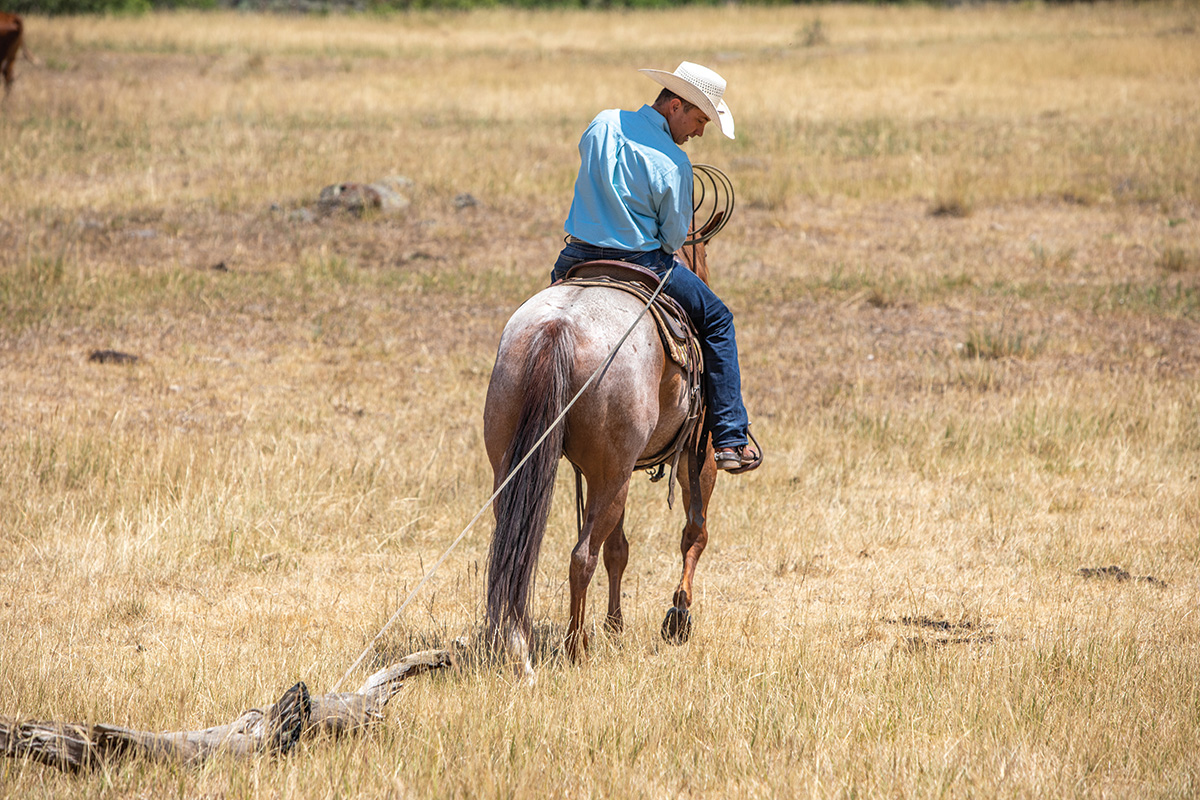
Ralston reminds you that any time you need to rest or praise your horse for doing well, face up to the log. Always emphasize that being faced up to the log is the best release.
You’ll ultimately circle your horse in both directions, working a large figure-eight while keeping your rope safely to your right side. In the highest show levels, horses perform the figure-eight log drag while trotting—but only after mastering the basics and facing up to the log often.
Meet the TrainerAaron Ralston works his horses on his family’s Collbran, Colo., cattle ranch and prepares them for world-class competition. He won Top 10 honors at the 2021 AQHA Versatility Ranch Horse World Championships in Open Junior Ranch Trail and overall championship finals. He also has championship titles in reining, cutting, working cowhorse and calf roping, and earned gold for the United States reining team at the FEI World Equestrian Games. |
This article about teaching a horse to drag a log appeared in the October 2021 issue of Horse Illustrated magazine. Click here to subscribe!




